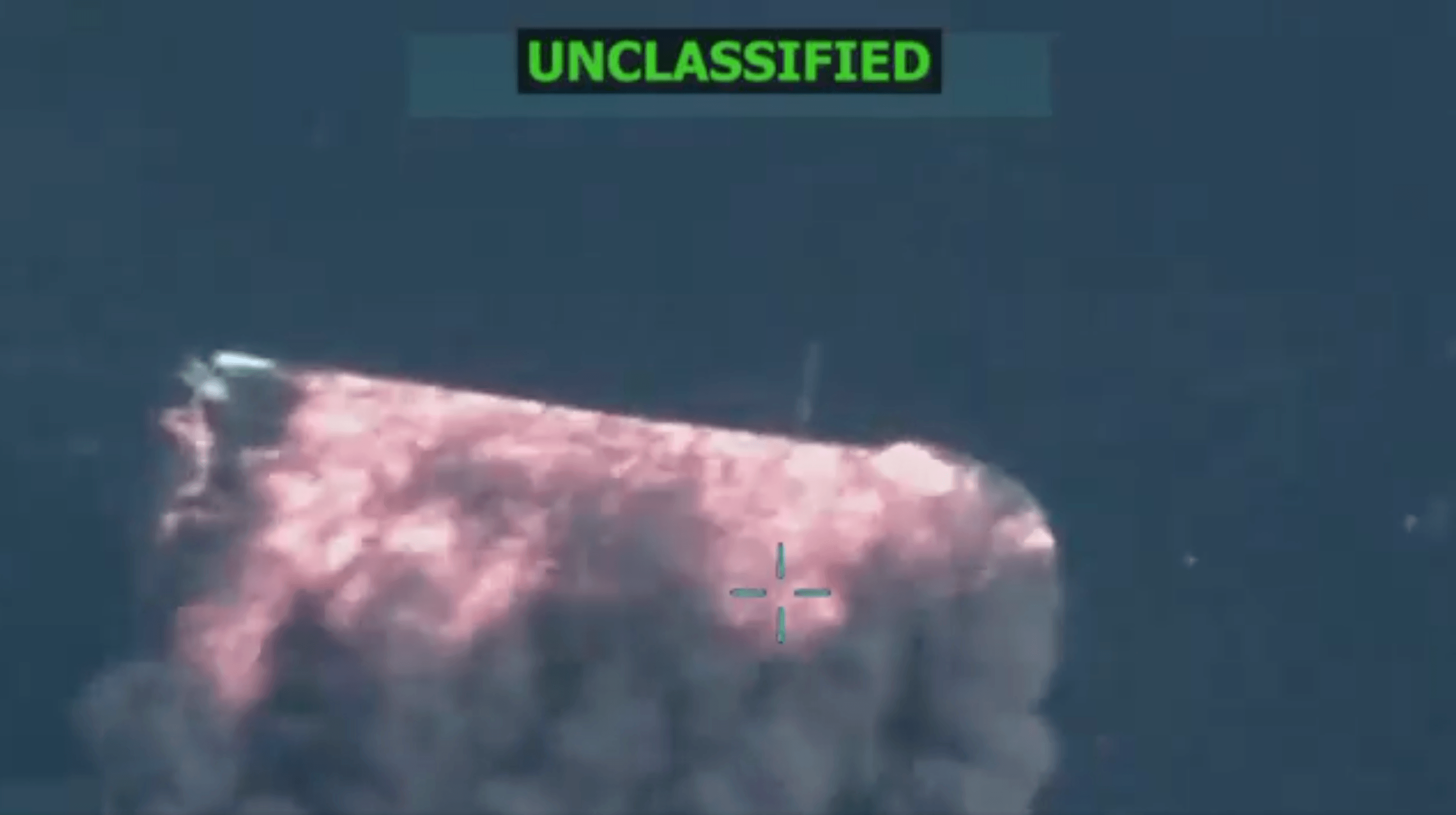Immigration Detainers: A Guide for the Perplexed
Local opposition to federal immigration enforcement is often treated as an ideological issue, with fights over sanctuary cities breaking down along familiar political lines. But setting politics aside, several local law enforcement agencies worry that they cannot lawfully comply with one important aspect of federal immigration enforcement—the immigration detainer.

Published by The Lawfare Institute
in Cooperation With

Local opposition to federal immigration enforcement is often treated as an ideological issue, with fights over sanctuary cities breaking down along familiar political lines. But setting politics aside, several local law enforcement agencies worry that they cannot lawfully comply with one important aspect of federal immigration enforcement—the immigration detainer. This post explains what immigration detainers are, charts a brief history of their use and discusses the current legal challenges they face.
What are immigration detainers?
Title 8, Section 287.7 of the Code of Federal Regulations, a Department of Homeland Security (DHS) regulation associated with the Immigration and Nationality Act, empowers “any authorized immigration officer” to issue immigration detainers to any Federal, State, or local law enforcement agency. Immigration and Customs Enforcement (ICE) uses detainers to inform other law enforcement agencies that it “seeks custody of an alien presently” in the other agency’s custody. Though the regulation refers to actions that the receiving agency “shall” take, courts have almost always construed compliance by state or local law enforcement as voluntary, reasoning that mandatory compliance would raise 10th Amendment anti-commandeering concerns. As the Third Circuit noted, “All Courts of Appeals to have commented on the character of ICE detainers refer to them as ‘requests’ or as part of an ‘informal procedure.’”
The detainer process begins when a local law enforcement agency arrests an individual who lacks lawful immigration status. At that moment, according to current DHS policy, the individual becomes a priority for removal—whether or not criminal charges are filed or proven. The individual simultaneously becomes easier for ICE to track down, because the FBI shares data on arrests by local law enforcement with ICE. But because ICE cannot unilaterally force an end to local criminal proceedings, any immigration arrest must wait until after the individual is released from state or local custody.
That’s where detainers come in. In order to facilitate a transfer of custody, ICE will send the local law enforcement agency a Form I-247-A, asking for 48 hours’ notice prior to the individual’s release. The form also asks that the individual be held for 48 hours after any scheduled release, so that ICE will have a wider window when its agents can take custody. Detainers have become more important to immigration enforcement as a result of DHS’s increasing focus on deporting individuals suspected of committing non-immigration crimes—a shift that began under the Obama administration and that has continued into the current one. (According to researchers with the Transactional Records Access Clearinghouse at the University of Syracuse, the Obama administration issued 85,720 detainers in Fiscal Year 2016. The Trump administration increased this pace in its first two full months, issuing 12,028 and 13,971 in February and March of 2017.) Their growing use has sparked growing resistance, as many jurisdictions argue that they cannot hold individuals for civil immigration violations simply because ICE asks them to.
Legal Background
The Supreme Court’s 2012 decision in Arizona v. United States set the stage for the detainer debate by significantly limiting state authority to enforce civil provisions of federal immigration law. In Arizona, the court struck down several provisions of an Arizona statute, including one that authorized warrantless arrests based on suspected removability. Though state law enforcement can generally arrest individuals suspected of federal crimes, the court made clear that, “[a]s a general rule, it is not a crime for a removable alien to remain present in the United States.” As such, if “the police stop someone based on nothing more than possible removability, the usual predicate for an arrest is absent.” The court further noted that federal immigration priorities might be disrupted by unilateral state enforcement and highlighted the Immigration and Nationality Act’s (INA’s) highly specific framework governing immigration arrests and state cooperation with federal immigration authorities. In light of this background, the court ruled that any local law enforcement authority “to make warrantless arrests of aliens based on possible removability” was preempted except in “specific, limited circumstances.”
The court did not address whether those circumstances extend to immigration detainers. Because detainers involve explicit requests for help by the federal government, they clearly do not present the same potential for frustration of federal priorities as do unilateral arrests by state law enforcement. At the same time, the court emphasized the training, certification requirements and other constraints the INA generally places on local officials’ enforcement of federal immigration law—all largely absent in the detainer context. Moreover, in discussing potential abuse of a separate provision that it ultimately upheld, the court made clear that “constitutional concerns” arise when local law enforcement detains someone for longer than they otherwise would because of her civil immigration status.
Notwithstanding these cautionary notes, the Obama administration issued over 200,000 detainers each year from 2009 through 2013 as it sought to reorient immigration enforcement around purported “risk[s] to public safety” and as ICE gained more data on local arrests. Before 2014, DHS policy allowed ICE to issue detainers if it had “reason to believe” an individual was removable. However, as individuals held on immigration detainers began challenging their detention, several courts held that ICE’s assertions about an individual’s immigration status did not provide an adequate predicate for continued detention by state or local law enforcement:
- Miranda-Olivares v. Clackamas County: The court granted partial summary judgment on Miranda-Olivares’s Section 1983 claim against Clackamas County Jail for violating her Fourth Amendment right to be free from unreasonable seizures. The magistrate judge found that Miranda-Olivares, who was arrested on a state criminal charge but denied release on bail because of an ICE detainer, had been subjected to a “new seizure[] independent of the initial finding of probable cause for violating state law.” “[A]bsent probable cause” of a new violation, Miranda-Olivares’ detention constituted an unreasonable seizure under the Fourth Amendment. But because the detainer only asserted that an immigration investigation “has been initiated” regarding Miranda-Olivares, “the ICE detainer alone did not demonstrate probable cause.”
- Morales v. Chadbourne: ICE mistakenly issued a detainer against a fully naturalized citizen who had been arrested on state criminal charges. The court declined to dismiss Morales’s claim that her detention by state authorities after posting bail constituted an unreasonable seizure under the Fourth Amendment. Because the detainer only specified that an immigration investigation had been initiated—without offering any detail on the basis for that investigation—the court reasoned that “[o]ne needs to look no further than the detainer itself to determine that there was no probable cause to support its issuance.” The First Circuit upheld this result, and the district court later granted summary judgment on Morales’ Fourth Amendment claim.
- Moreno v. Napolitano: Several individuals who had been held pursuant to ICE detainers brought a class action suit, alleging both constitutional and statutory claims against DHS. 8 U.S.C. 1357(a)(2) authorizes warrantless immigration arrests when an individual is “likely to escape” before a warrant can issue. Reasoning that detainers led to warrantless arrests without any individualized consideration of that likelihood, the court held that detainers exceeded ICE’s statutory authority. It declined to reach any constitutional questions.
- Orellana v. Nobles County: Orellana was denied the opportunity to post bail on a DUI charge because of an ICE detainer. The court followed Moreno in holding that this detention constituted a warrantless arrest exceeding the scope of 1357(a)(2) because no individualized determination had been made that Orellana was “likely to escape.” The court took its analysis one step further, holding that because 1357(a)(2) did not authorize warrantless arrests pursuant to detainers, such arrests violated the Fourth Amendment.
In November 2014, in response to these and other cases, the Obama administration added a new detainer form that only requested notification of release, rather than extended detention. It also began requiring that any detainer that did request extended detention be accompanied by "a final order of removal or … other sufficient probable cause basis to find that the person is a removable alien, thereby addressing the Fourth Amendment concerns raised in recent federal court decisions."
Its pace of detainer issuance also fell markedly to under 200,000 in 2014 and under 100,000 in 2015 and 2016. Though the Trump administration formulated its own policy and detainer form, and, once again, began asking for extended detention in each detainer request, it still conditioned such requests on an assertion that probable cause existed to believe an individual is removable. It also continued requiring “[a]s a matter of policy” that such requests be accompanied by administrative immigration arrest warrants or orders for removal.
Current Landscape
Now that all detainer requests are accompanied by removal orders or immigration arrest warrants, they likely satisfy probable cause of civil removability. But this raises a new question: Does civil removability provide an adequate basis for extended detention by a local law enforcement agency at the federal government’s request? Several courts have answered no.
Drawing on a series of Supreme Court holdings construing the Fourth Amendment to require probable cause of an “offense” or “crime,”—and the Court’s characterization in Arizona of unlawful immigration status as a civil, rather than criminal, matter—a district court in Mercado v. Dallas County declined to dismiss plaintiffs’ allegations that detention pursuant to ICE detainers violated their Fourth Amendment rights. “Dallas County’s belief that plaintiffs had committed a civil immigration offense” did not, according to the court, meet the Fourth Amendment’s requirement of “probable cause to believe they had committed a criminal offense.” Similarly, in Santoyo v. United States, a district court ruled that detention pursuant to immigration detainers violated plaintiffs’ Fourth Amendment rights. It reasoned that “neither the mere removability of an individual nor the entry of a final removal order against them equates to a showing of probable cause that they have committed a crime.”
A more fully articulated version of this theory came in El Cenizo v. Texas, where a federal district court in Texas preliminarily enjoined portions of a Texas law that would have required local law enforcement to unconditionally comply with all immigration detainers. It determined that the resulting detentions would violate the Fourth Amendment, drawing the same distinction as Mercado and Santoyo between probable cause of civil removability asserted in immigration detainers and probable cause of a crime required for state or local arrests. But importantly, El Cenizo also offered a rationale for why this distinction matters—one that responds to the objection that we allow civil arrests in a variety of contexts, in cases of civil contempt, for example, or when ICE itself makes an arrest.
The key distinction, according to the El Cenizo court, is between the kinds of arrest authority extended to federal and state officers by Congress and state legislatures. Whereas Congress vested federal officials with authority to make warrantless arrests for civil immigration offenses in particular circumstances, “peace officers in Texas are authorized [only] to ‘interfere without a warrant to prevent or suppress crime’” (citing Tex. Crim. Proc. Code Art. 12.13). This line of reasoning echoed a recent decision by the Massachusetts Supreme Judicial Court, which held that, as a matter of state law, Massachusetts law enforcement could not detain individuals pursuant to immigration detainers. This owed to the absence of any positive authorization in Massachusetts statutory or common law for warrantless arrests for civil immigration offenses. (This was the first ruling by a state’s highest court addressing immigration detainers.)
The El Cenizo court constitutionalized this concern, reasoning that the absence of explicit state or federal statutory authority for state or local officers to enforce ICE detainers means that detention pursuant to detainers violates the Fourth Amendment. The court then took this analysis one step further. Citing Arizona, it reasoned that Texas could not affirmatively extend such authority because of Congress’ exclusive power over immigration arrests. In other words, immigration-based arrests by local or state law enforcement, even when effected pursuant to federal requests, exceed their lawful authority, and such authority can only be created by Congress, not state legislatures.
No court of appeals has yet weighed in on the current version of immigration detainers, or whether “probable cause” of civil removability is enough to support state and local compliance. But without more guidance, it seems clear that state and local jurisdictions take on legal risk when they hold individuals solely on the basis of immigration detainers.





